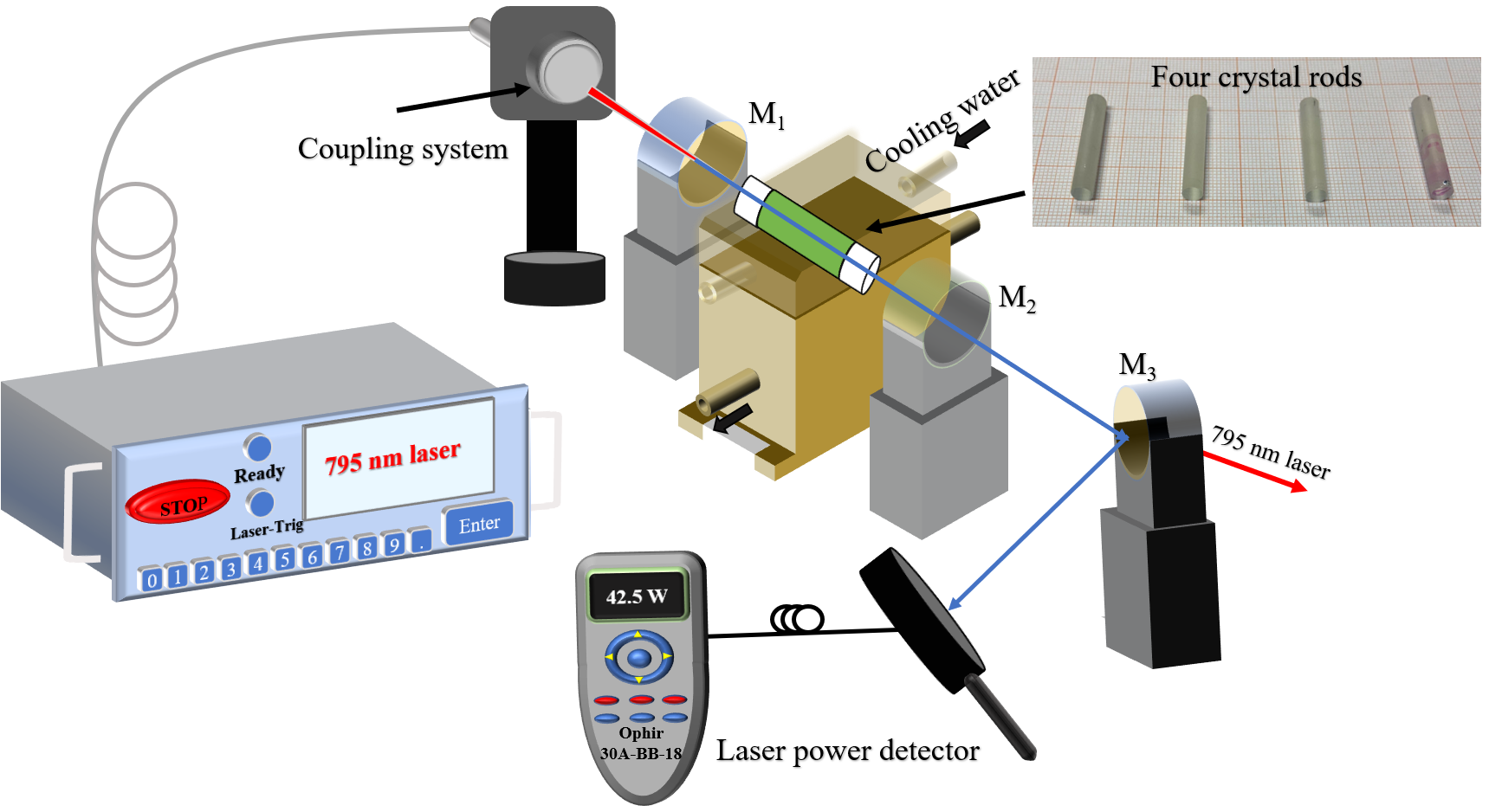The related finding was published in Optics Express.
~ 2-μm near-infrared lasers are crucial in areas like medical surgery, lidar, and scientific research. These lasers can be created by using a 795 nm laser to excite a special type of crystal (doped with Tm³⁺ ions). For Tm-doped crystals, using end pumping can produce high-power lasers, but when the power gets too high, heat builds up unevenly in the crystal, distorting the laser beam and reducing its quality. Currently, various methods have been proposed to mitigate or compensate for the thermal effects in crystals.
This study is the first to apply thermal bonding combined with concave end-face processing to Tm:YAP crystal rods, resulting in the fabrication of four different types of crystal rods: flat Tm:YAP rod, flat YAP/Tm:YAP/YAP bonding rod, concave Tm:YAP rod, and concave YAP/Tm:YAP/YAP bonding rod.
When testing the laser performance of each rod with a single-end pumping method, the researchers found that using YAP matrix crystals as bonded end-caps helped improve heat dissipation, while the concave end-face design effectively reduced the thermal lensing effect. The concave YAP/Tm:YAP/YAP bonding rod stood out by increasing the maximum laser output power from 36.56 W to 42.5 W and improving efficiency by about 4% compared to the flat Tm rod. It also remained crack-free under high power and extended use, unlike the flat Tm rod, which developed cracks. Additionally, the concave YAP/Tm:YAP/YAP bonding rod produced the highest quality laser beam, as indicated by the smallest M2 factor among the four rods.
Their findings suggest that combining thermal bonding with concave end-face processing effectively enhances the heat dissipation capacity of Tm:YAP lasers, reduces thermal lensing effects, thereby enabling high-performance near-infrared laser output.

Fig. 1. Schematic diagram of the LD end-pumped four kinds of crystal rods. (Image by DONG Kunpeng)

